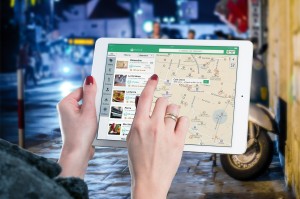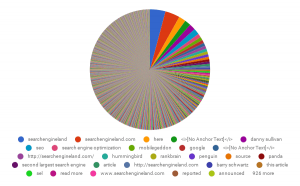“We live in a world where the notion of ambiguity has become a punchline. Turning to our smartphones when we need something – a forgotten word, a better price, a movie time – has become a reflex. We want things right, and we want things right away. As a result, the consumer journey looks markedly different than it did only five years ago”.
The quote above was taken from a recent Think with Google article that talks about Moment Marketing and reflects on Micro-Moments. The concept of ‘moments’ is likely something that most readers will be able to relate to. How many of us get out our smartphones while standing in a queue, during our commute, while watching TV, or even while we’re shopping just to find that piece of information that seems so urgent at the time?
With a world of information at their fingertips, consumers expectation for immediate and relevant information has become increasingly strong; they want what they want, when they want it and are not prepared to look around for it! At the same time, consumers have become more confident that they can make well-informed choices whenever the needs arise, making it crucial for brands to be there in these moments that matter; the moments when consumers are actively looking to learn, discover, find, and buy.
Moment Marketing is similar to what a lot of digital marketers have been referring to as real-time marketing, which is not a new concept. Some of the best examples I’ve come across of brands embracing the ‘moment’ include Kit Kat, an 80 year old brand not just staying current but ahead of the game in the digital world, Oreo completely owning the SuperBowl XLVII Black Out with a now infamous tweet, or Mini Cooper’s timely and humorous response to the horse meat scandal. However with recent studies looking into ‘Micro-Moments’ and ‘Moment Marketing’ in more depth, brands and marketers have really taken this to an elevated level. I’ve previously explored this with regards to providing content, but Moment Marketing changes the game again. Here’s how…
More about Moment Marketing
In 2011, Google introduced the Zero Moment of Truth, which outlined the significance of digital research in the consumer purchase journey. The rise of smartphones has refined this journey and Google now refers to Micro Moments, which are moments during the day that inspire a search -based on a question the consumer needs answering, and can be captured through Moment Marketing.
Google identifies four intention moments that define Moment Marketing. These are “real-time, intent-driven micro-moments” that are powered by consumer needs and represent “critical opportunities for brands to shape our decisions and preferences”.
- I Want To Know: Someone who is performing initial research about a product.
- I Want To Go: Someone who is looking for information about where to find the product locally.
- I Want To Buy: Someone who is looking for information in the run up to, or at the moment of, purchase.
- I Want To Do: Someone who is looking for how to use a product or how to do a thing, which could lead them to a product.
When a purchase journey is undertaken, consumers are looking for a brand to deliver on three things: Intent (“Who can address my needs…”), Context (“… in my current situation…”), and Immediacy (“… as quickly as I need it done?”).
Micro-Moments are a game changer for many brands, especially those that have historically rested on their laurels and relied on consumer brand loyalty to keep them going. If recent trends are anything to go by, convenience, clarity, and speed will trump brand loyalty in most cases, meaning that if your brand is not there at the right time with the right information, your competitors sure will be!
How can brands be in the moment?
Google identifies three key steps to delivering on customer expectation and winning Moments:
- Be There: Be visible across all stages of the purchase journey.
- Be Useful: Offer practical, informational content and frame it in a way that clearly answers questions.
- Be Quick: Communicate the information concisely and ensure your site or app is quick to load and easily navigable via any device.
This means that now more than ever, brands need to ensure their digital presence, and more importantly their mobile presence, is strong enough that consumers don’t need to look around for the information they require. This Google article sums things up perfectly by stating:
“The power has shifted radically to the consumer, who now has nearly infinite access to information and product choice anytime, anywhere, anyway. Price transparency is ubiquitous, and consumers control many of the throttles on the messages they receive. Mass marketing is on the wane, giving way to greater personalization. Today, brand marketing and the consumer’s path to purchase are rarely characterized by a few big, well-orchestrated moments. Instead, many small interactions coalesce to determine success. In this new era, what happens in the now… is often becoming more important than the cumulative effect of our best-laid and elaborate marketing plans.”
“Near me” searches & Showrooming
Finding a product or service nearby used to be a laborious task involving Yellow Pages, recommendations, maps and telephones – not exactly what you call quick or convenient. But thanks to smartphones, Wifi hotspots and mobile phone providers with affordable data plans, it’s now become second nature to stand on the street, search for things like ‘pizza restaurant near me’ and be presented with a list of the most relevant places, ordered by distance. Google search interest in “near me” has increased 34X since 2011 and nearly doubled since last year. The vast majority come from mobile – 80% in Q4 2014.
These moments are crucial for brands to capture, as it’s very clear that when a person searches for a ‘restaurant near me’ their intention is to head to that restaurant, in that precise moment.
Take a look at the top “Near me” searches on the Weekend (US data)

What stands out from this data is that the searches (apart from a few) are mostly generic without specific brand names. In these ‘moments’, convenience is more important than brand loyalty, so being able to provide useful, relevant and frictionless experiences will be what makes a brand stand out in the moment.
Trend data also shows that research isn’t just happening before the store visit, but also during it, an activity commonly referred to as “showrooming”. Research dating back from 2014 and 2013 tells us that 44% of shoppers are showrooming (EE, 2014), while 50% of m-Shoppers are more likely to purchase in store when their mobile device helps them get information (AIMEA, 2013). Until recently, showrooming often held negative connotations for retailers; sparking fears that consumers would be searching for more competitive prices from the brand’s competitors while checking the items in a physical store. However, more recently, some of the more digitally savvy brands have embraced showrooming to their advantage.
“[Showrooming] is not a bad word at Walmart. If people want to showroom, then we are going to be the best darn showroom in town… We provide you with the access, service and the price that’s compelling you to buy it from us.” Walmart CEO of Global e-Commerce Neil Ashe.
How do brands get started?
 Although these Micro-Moments happen quickly, brands can plan for them and produce solutions to ensure they’re there when they need to be. This means putting yourself in your customers’ shoes and thinking about situations in which people will look for something that your brand has to offer. Marketers need to think about how their customers interact with the brand when they are near a store. What does having a smartphone allow them to do that they previously couldn’t do? Is your brand delivering useful local information? Does your website’s design make it easy for consumers to find information quickly? Talking to your customers is your first step, and then it comes down to working as a team internally to make sure the content on your site is useful, quick and timely.
Although these Micro-Moments happen quickly, brands can plan for them and produce solutions to ensure they’re there when they need to be. This means putting yourself in your customers’ shoes and thinking about situations in which people will look for something that your brand has to offer. Marketers need to think about how their customers interact with the brand when they are near a store. What does having a smartphone allow them to do that they previously couldn’t do? Is your brand delivering useful local information? Does your website’s design make it easy for consumers to find information quickly? Talking to your customers is your first step, and then it comes down to working as a team internally to make sure the content on your site is useful, quick and timely.
Using innovative marketing techniques, such as Google local inventory ads that show availability nearby within the search ad, or using location extensions and directions to drive store visits will also help brands stand out. Savvy brands can also fine tune their location bid adjustments to show search and display ads to people who are within a certain distance from their stores. Once the foundation has been set, retailers and marketers can then get more creative by using iBeacons, which can send timely messages as customers walk by a store, or step inside.
If you’re a marketer, the key takeaway is clear: whether you’re a small business or a global brand, you need to deliver on needs in these key moments. Those who remain focused on the consumer’s context and intent in the Micro-Moment will be the ones that not only successfully deliver on needs, but also effortlessly advance the consumer journey and build brand preference along the way.
Article originally published in State of Digital Blog.
Digital & Social Articles on Business 2 Community(143)
Report Post





